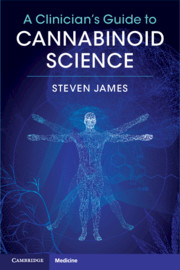Book contents
- A Clinician’s Guide to Cannabinoid Science
- Reviews
- A Clinician’s Guide to Cannabinoid Science
- Copyright page
- Dedication
- Contents
- Preface
- Section 1 An Introduction to Cannabinoid Science
- Chapter 1 An Introduction to the Botany and History of Cannabinoids
- Chapter 2 Δ9-Tetrahydrocannabinol (THC) and Cannabidiol (CBD)
- Chapter 3 The Endocannabinoids
- Chapter 4 Approved Cannabinoid Medicines for Therapeutic Use
- Chapter 5 The Safety of Phytocannabinoids and Cannabinoids in Clinical Practice
- Section 2 Potential Therapeutic Uses of Cannabinoids in Clinical Practice
- Index
- References
Chapter 3 - The Endocannabinoids
from Section 1 - An Introduction to Cannabinoid Science
Published online by Cambridge University Press: 12 October 2020
- A Clinician’s Guide to Cannabinoid Science
- Reviews
- A Clinician’s Guide to Cannabinoid Science
- Copyright page
- Dedication
- Contents
- Preface
- Section 1 An Introduction to Cannabinoid Science
- Chapter 1 An Introduction to the Botany and History of Cannabinoids
- Chapter 2 Δ9-Tetrahydrocannabinol (THC) and Cannabidiol (CBD)
- Chapter 3 The Endocannabinoids
- Chapter 4 Approved Cannabinoid Medicines for Therapeutic Use
- Chapter 5 The Safety of Phytocannabinoids and Cannabinoids in Clinical Practice
- Section 2 Potential Therapeutic Uses of Cannabinoids in Clinical Practice
- Index
- References
Summary
As we have discussed previously in Chapters 1 and 2, cannabinoids have been very difficult to isolate and study due to their significant lipophilic properties. Once it was finally determined that (-)Δ9-tetrahydrocannabinol (THC) was the psychoactive component in cannabis (Gaoni and Mechoulam, 1964), attention quickly focused on understanding how THC worked in the brain. Many believed cannabinoids acted directly on membranes and did not bind specifically to receptors because of the high lipophilicity of THC.
Information
- Type
- Chapter
- Information
- A Clinician's Guide to Cannabinoid Science , pp. 27 - 40Publisher: Cambridge University PressPrint publication year: 2020
